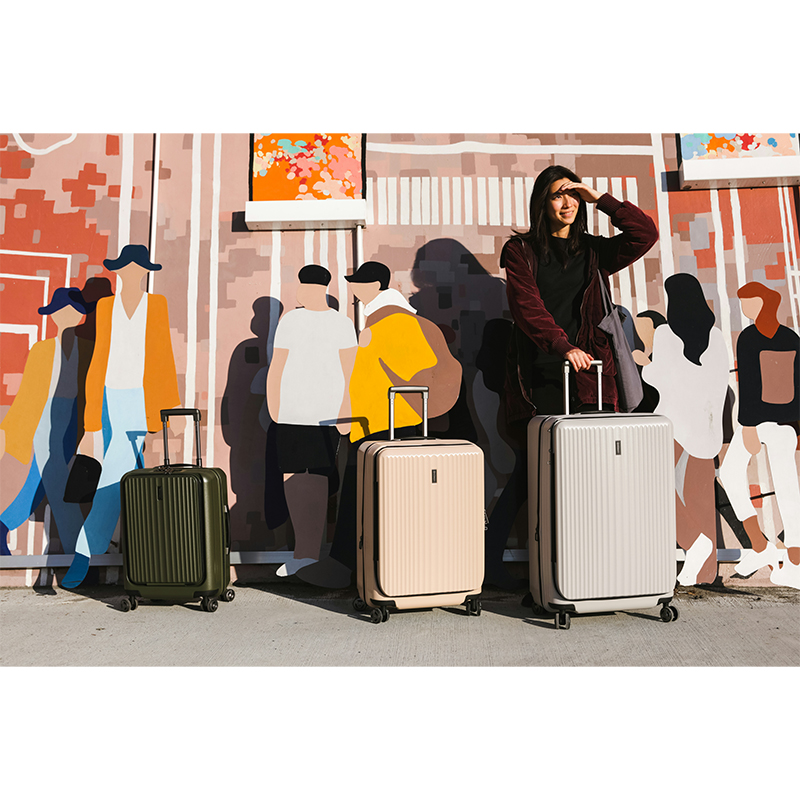Sweden combines steady air traffic recovery, strong tourism, high digital penetration, and strict sustainability expectations—all of which shape the bags and luggage market. Global brands (Samsonite, Rimowa, Delsey) are visible, but small and niche labels can find clear entry points, especially in eco-friendly luggage, commuter backpacks, and minimalist handbags.
1) Demand Drivers in Sweden (2025)
Air Travel: Stockholm Arlanda handled over 20M passengers in 2024 (+11% YoY); Gothenburg Landvetter and Malmö airports also showed recovery. Continued growth in 2025 supports demand for cabin luggage and carry-ons.
Tourism: Sweden logged over 70M guest nights in 2024, with foreign visitors accounting for nearly half. Peak summer months and ski-season inflows boost suitcase and backpack sales.
E-commerce: Online shopping penetration is among the highest in Europe. Sweden’s e-commerce market exceeded US$20B in 2024, growing at ~7% annually. Bags and luggage are frequently purchased online via Zalando, Boozt, Amazon.se, and D2C stores.
Purchasing Power: GDP per capita is around US$63,000, giving Swedish consumers strong buying ability—though they are highly value-conscious and expect sustainability without excessive markups.
2) Category Breakdown
Handbags (Women’s):
Swedish buyers prefer minimalist Scandinavian design, durability, and versatile use (work + leisure). Vegan leather, recycled textiles, and functional totes gain traction.
Backpacks:
A culture of cycling, commuting, and outdoor activities drives demand for ergonomic, waterproof, and laptop-ready backpacks. Daypacks that transition from office to weekend outdoors are especially popular.
Luggage:
Cabin-size hard-shell (20”) is the bestseller, aligned with budget airline policies.
Two-piece sets (€120–200) dominate online sales.
Lightweight PP/PC models with spare parts are preferred over heavy luxury.
Aluminum-frame or branded designer luggage remains niche but aspirational in Stockholm/airport retail.
3) Price Segments
Entry/Online Value: €80–120 single suitcase; €130–200 two-piece sets.
Mid-range: €180–300, with eco-materials, premium zippers/wheels, and warranty.
Premium: €500+, usually aluminum or luxury designer.
Small brands fit best in eco-functional luggage at €120–200 and backpacks at €90–150.
4) Regulations & Sustainability
GPSR (General Product Safety Regulation): Mandatory across EU/EEA (includes Sweden) from Dec 2024. Requires EU-based responsible party, product traceability, and safety files.
PFAS Ban: Sweden is a leading advocate for stricter PFAS restrictions in the EU. Transitioning to PFC-free coatings is essential for market entry.
Consumer Expectation: Sustainability is non-negotiable in Sweden. Products should highlight rPET lining, recycled shells, FSC packaging, and repairable parts.
5) Forecast 2026–2030
Growth Outlook: Market expected to grow at 5–7% CAGR, driven by e-commerce, tourism, and strong eco-demand.
Trends:
Lightweight & repairable luggage (replaceable wheels, reinforced handles).
Eco-certified handbags (vegan leather, recycled materials).
Commuter backpacks with waterproof features, laptop pockets, ergonomic straps.
Under-seat cabin bags for budget airline compliance.
Minimalist Scandinavian aesthetics across categories.
6) Opportunities for Small & Niche Brands
Yes—Sweden is a highly open market for small brands, provided they deliver transparency and sustainability.
Why small brands can succeed:
Swedish consumers are brand-conscious but not brand-locked—function and eco-credentials weigh heavily.
Online-first market: Amazon.se, Zalando, Boozt allow equal visibility for niche brands.
Repair and durability resonate strongly: warranties and spare parts build trust.
How to enter:
Position around sustainable + minimalist Scandinavian design.
Offer repair kits/spare wheels to differentiate.
Translate selling points into Swedish (hållbar = sustainable, vattentät = waterproof, reparerbar = repairable).
Push seasonal campaigns: summer travel (luggage), back-to-school (backpacks), Christmas gifts (handbags).
Conclusion
Sweden’s luggage and bag market is on a steady growth trajectory, supported by rising travel demand, strong e-commerce penetration, and wealthy consumers with strict sustainability expectations. While global players dominate premium retail, niche and small brands can carve out real market share in eco-friendly, functional, and minimalist product lines.
Post time: Sep-30-2025
